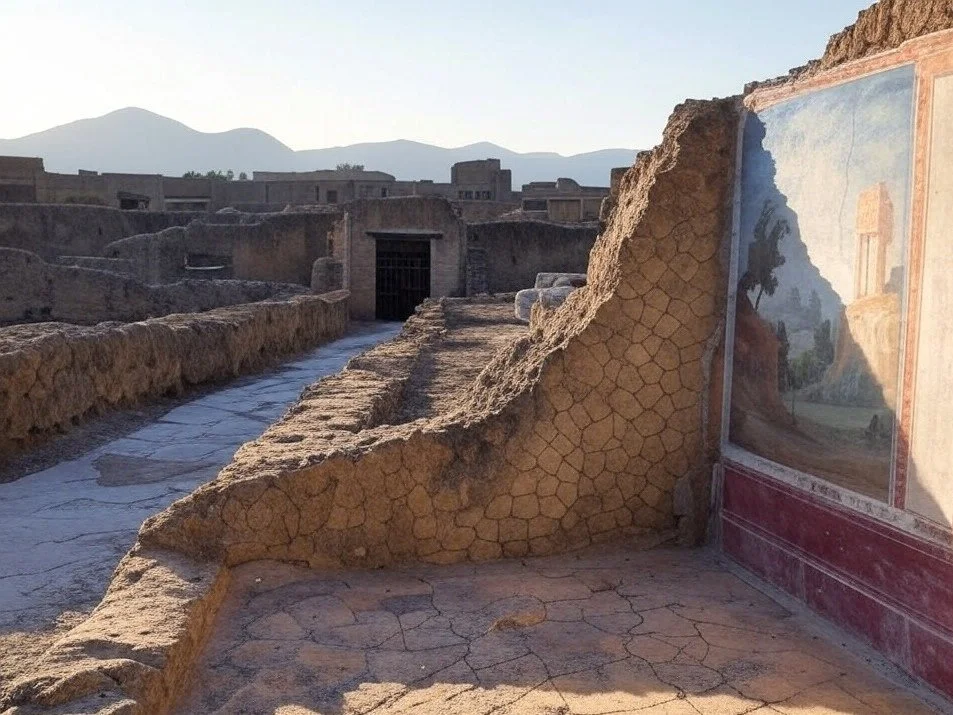Unearthing Herculaneum
Herculaneum, an ancient Roman town buried by the catastrophic eruption of Mount Vesuvius in 79 CE, was rediscovered in the early 18th century. Unlike Pompeii, which was covered by volcanic ash, Herculaneum was entombed in a thick layer of volcanic mud and rock, preserving structures and organic materials with remarkable detail. Excavations began in 1738 under the direction of Spanish engineer Rocque Joaquín de Alcubierre, uncovering a treasure trove of Roman life frozen in time.
Superior Preservation Compared to Pompeii
The unique burial conditions of Herculaneum allowed for exceptional preservation of wooden structures, textiles, and even food remains—items rarely found in Pompeii. Multistory buildings, intricately decorated villas, and well-preserved frescoes and mosaics provide a more intimate glimpse into Roman domestic life. The preservation of scrolls in the Villa of the Papyri, which are still being studied today, adds to the site's scholarly importance.
Insights into Roman Life
The discoveries at Herculaneum offer invaluable insights into the daily lives of its residents. The town’s well-planned streets, sophisticated plumbing systems, and luxurious homes indicate a wealthy and vibrant community. Artifacts such as furniture, jewelry, and even carbonized food illustrate the customs, diets, and personal tastes of its inhabitants. The skeletal remains found in boat houses along the shoreline tell a tragic story of those who sought refuge but perished in the eruption.
Conclusion
Herculaneum’s rediscovery has provided historians and archaeologists with a unique perspective on Roman civilization. Its remarkably preserved structures and artifacts offer a more detailed and personal view of daily life in the ancient world, complementing the broader picture painted by Pompeii. Today, ongoing excavations and conservation efforts continue to reveal new facets of this extraordinary site.







